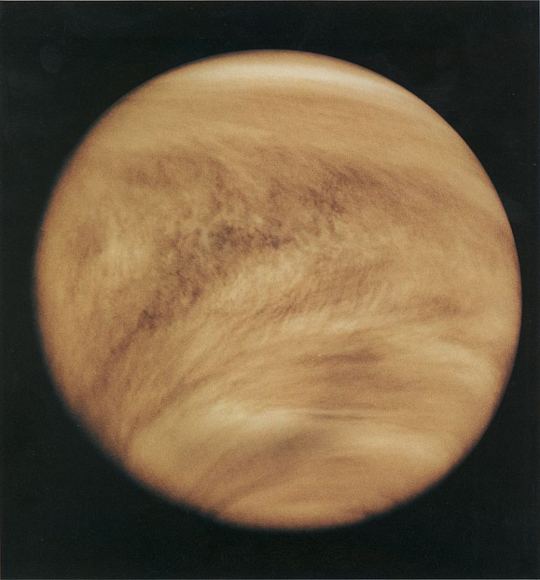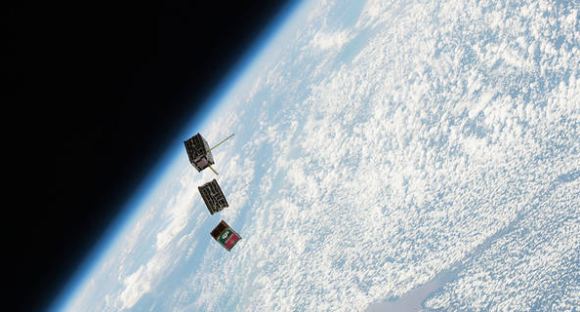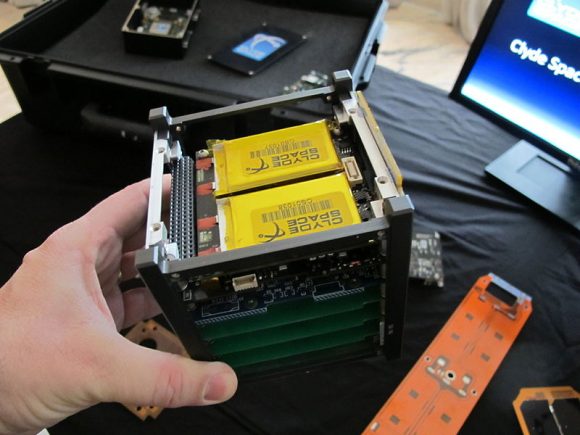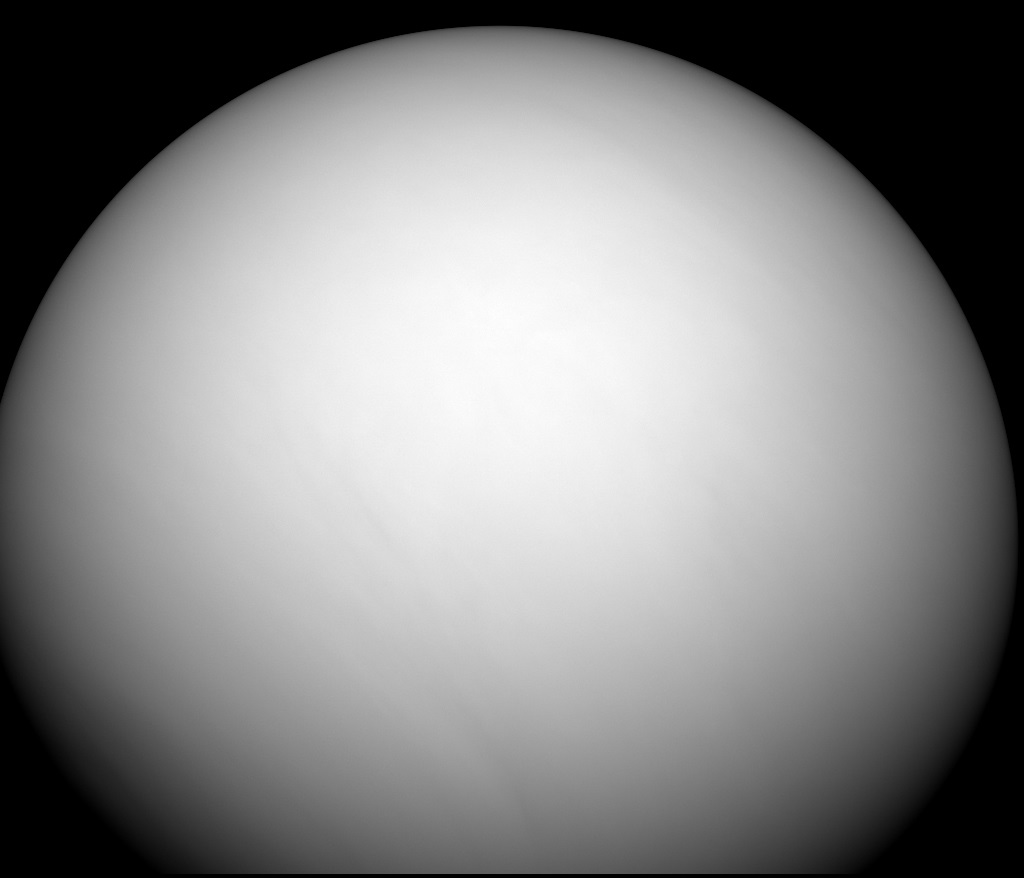From space, Venus looks like a big, opaque ball. Thanks to its extremely dense atmosphere, which is primarily composed of carbon dioxide and nitrogen, it is impossible to view the surface using conventional methods. As a result, little was learned about its surface until the 20th century, thanks to development of radar, spectroscopic and ultraviolet survey techniques.
Interestingly enough, when viewed in the ultraviolet band, Venus looks like a striped ball, with dark and light areas mingling next to one another. For decades, scientists have theorized that this is due to the presence of some kind of material in Venus’ cloud tops that absorbs light in the ultraviolet wavelength. In the coming years, NASA plans to send a CubeSat mission to Venus in the hopes of solving this enduring mystery.
The mission, known as the CubeSat UV Experiment (CUVE), recently received funding from the Planetary Science Deep Space SmallSat Studies (PSDS3) program, which is headquartered as NASA’s Goddard Space Flight Center. Once deployed, CUVE will determine the composition, chemistry, dynamics, and radiative transfer of Venus’ atmosphere using ultraviolet-sensitive instruments and a new carbon-nanotube light-gathering mirror.

The mission is being led by Valeria Cottini, a researcher from the University of Maryland who is also CUVE’s Principle Investigator (PI). In March of this year, NASA’s PSDS3 program selected it as one of 10 other studies designed to develop mission concepts using small satellites to investigate Venus, Earth’s moon, asteroids, Mars and the outer planets.
Venus is of particular interest to scientists, given the difficulties of exploring its thick and hazardous atmosphere. Despite the of NASA and other space agencies, what is causing the absorption of ultra-violet radiation in the planet’s cloud tops remains a mystery. In the past, observations have shown that half the solar energy the planet receives is absorbed in the ultraviolet band by the upper layer of its atmosphere – the level where sulfuric-acid clouds exist.
Other wavelengths are scattered or reflected into space, which is what gives the planet its yellowish, featureless appearance. Many theories have been advanced to explain the absorption of UV light, which include the possibility that an absorber is being transported from deeper in Venus’ atmosphere by convective processes. Once it reaches the cloud tops, this material would be dispersed by local winds, creating the streaky pattern of absorption.
The bright areas are therefore thought to correspond to regions that do not contain the absorber, while the dark areas do. As Cottini indicated in a recent NASA press release, a CubeSat mission would be ideal for investigating these possibilities:
“Since the maximum absorption of solar energy by Venus occurs in the ultraviolet, determining the nature, concentration, and distribution of the unknown absorber is fundamental. This is a highly-focused mission – perfect for a CubeSat application.”

Such a mission would leverage recent improvements in miniaturization, which have allowed for the creation of smaller, box-sized satellites that can do the same jobs as larger ones. For its mission, CUVE would rely on a miniaturized ultraviolet camera and a miniature spectrometer (allowing for analysis of the atmosphere in multiple wavelengths) as well as miniaturized navigation, electronics, and flight software.
Another key component of the CUVE mission is the carbon nanotube mirror, which is part of a miniature telescope the team is hoping to include. This mirror, which was developed by Peter Chen (a contractor at NASA Goddard), is made by pouring a mixture of epoxy and carbon nanotubes into a mold. This mold is then heated to cure and harden the epoxy, and the mirror is coated with a reflective material of aluminum and silicon dioxide.
In addition to being lightweight and highly stable, this type of mirror is relatively easy to produce. Unlike conventional lenses, it does not require polishing (an expensive and time-consuming process) to remain effective. As Cottini indicated, these and other developments in CubeSat technology could facilitate low-cost missions capable of piggy-backing on existing missions throughout the Solar System.
“CUVE is a targeted mission, with a dedicated science payload and a compact bus to maximize flight opportunities such as a ride-share with another mission to Venus or to a different target,” she said. “CUVE would complement past, current, and future Venus missions and provide great science return at lower cost.”

The team anticipates that in the coming years, the probe will be sent to Venus as part of a larger mission’s secondary payload. Once it reaches Venus, it will be launched and assume a polar orbit around the planet. They estimate that it would take CUVE one-and-a-half years to reach its destination, and the probe would gather data for a period of about six months.
If successful, this mission could pave the way for other low-cost, lightweight satellites that are deployed to other Solar bodies as part of a larger exploration mission. Cottini and her colleagues will also be presenting their proposal for the CUVE satellite and mission at the 2017 European Planetary Science Congress, which is being held from September 17th – 22nd in Riga, Latvia.
Further Reading: NASA

